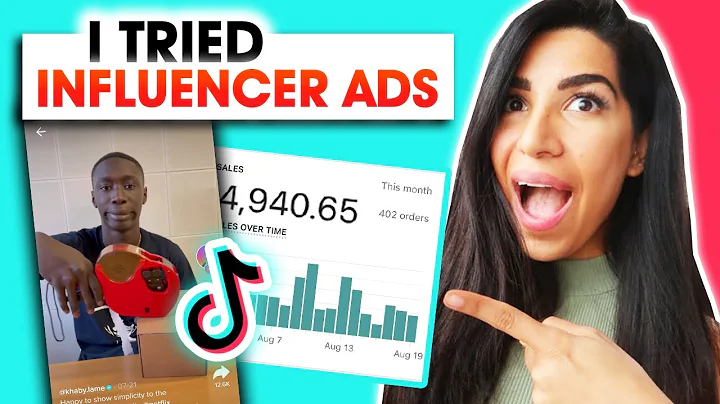7 Steps to Designing a Memorable Logo (Free Guide)
Table of Contents:
- Introduction
- Importance of a Memorable Logo
- The Process of Designing a Logo
3.1 Starting with Why
3.2 What Will We Do?
3.3 Creating a Brand Identity
- Finding Design Inspiration
4.1 Logoed
4.2 Logo Spire
4.3 Brand New
4.4 Logo Lounge
4.5 Logo Design Love
- Choosing the Right Colors
5.1 Understanding the Psychological Effects of Colors
5.2 Creating Color Combinations for Your Logo
- Selecting the Perfect Typeface
6.1 Serif Type Styles
6.2 San Serif Type Styles
6.3 Script Styles
6.4 Decorative Styles
- Revising and Getting Feedback
7.1 Importance of Revisions
7.2 Seeking Feedback
- Polishing Your Design
- Should You Hire a Designer or Design Your Own Logo?
9.1 Factors to Consider
9.2 Resources for Hiring Designers
- Conclusion
Designing a Memorable Logo: The Complete Guide
Introduction
In today's competitive market, it is crucial for businesses to have a memorable logo that represents their brand in an authentic and impactful way. A logo serves as the face of a brand and plays a vital role in creating a lasting impression on customers. In this guide, we will explore the step-by-step process of designing a memorable logo that captures the essence of your brand. From understanding the importance of a memorable logo to choosing the right colors and typeface, we will cover everything you need to know to create a logo that stands out.
Importance of a Memorable Logo
A memorable logo is more than just a visual representation of a brand. It serves as a powerful tool that communicates the core values and personality of a business. A well-designed logo can leave a lasting impression on customers, making your brand easily recognizable and differentiated from competitors. It acts as a point of reference for your brand, allowing customers to connect with your business on a deeper level. Whether it's on a website, product packaging, or marketing materials, your logo is the first thing people see, making it crucial to create a design that showcases your brand in the most authentic way.
The Process of Designing a Logo
3.1 Starting with Why
Before diving into the process of designing a logo, it is essential to understand the purpose and mission behind your business. Start by asking yourself why you started your business, what core values are important to you, and what sets you apart from the competition. Defining your brand's identity will provide valuable insights into the design elements that should be incorporated into your logo. This groundwork will make the rest of the logo design process more seamless and purposeful.
3.2 What Will We Do?
Once you have a clear understanding of your brand's identity, it is time to determine your desired actions and objectives. Brainstorm actionable steps that address the gaps in the market you identified. Think about how you can best address the problems and create a unique selling proposition for your brand. By establishing what you will do, you can better define how you want to be perceived as a brand and align your logo design accordingly.
3.3 Creating a Brand Identity
Your brand identity encompasses all the distinguishing characteristics of your brand, including language, style, and sentiment. Think of your brand as a unique persona. Your logo plays a crucial role in infusing your brand identity into a single image that captures the essence of your business. Before sketching logo ideas, ensure you have a clear idea of your brand's identity by answering the previous questions. This will help you create a logo that accurately represents who you are and what you stand for.
Finding Design Inspiration
The creative process of designing a logo can often feel overwhelming. It is helpful to gather inspiration from other creative individuals and explore existing logo designs. Here are some recommended resources:
4.1 Logoed
Logoed is a collection of stunning logos that serves as a source of inspiration for logo design ideas. Browse through their frequently updated collection to spark your creativity.
4.2 Logo Spire
Logo Spire is a vast collection of user-submitted logo designs. It offers a wealth of diverse designs to help you get your creative juices flowing.
4.3 Brand New
Brand New is a blog that covers designs and redesigns of new and notable brands across all industries. It provides valuable insights into the latest logo design trends and techniques.
4.4 Logo Lounge
Logo Lounge is a blog where graphic designers can upload their latest logos. It is also known for publishing books showcasing featured artwork, making it a great resource for logo design inspiration.
4.5 Logo Design Love
Logo Design Love is a design blog curated by graphic designer David Airey. It offers reviews of logos and marketing designs from around the world, providing valuable insights and inspiration.
Choosing the Right Colors
The use of colors in logo design is crucial, as it can evoke specific emotions and convey messages. Understanding the psychological effects of colors is essential when selecting colors for your logo. Consider the following:
5.1 Understanding the Psychological Effects of Colors
Different colors have different effects on human emotions and behavior. For example, yellow tends to invoke happy feelings, while blue evokes a sense of peace and trust. It is crucial to choose colors that align with your brand's intended message or personality.
5.2 Creating Color Combinations for Your Logo
Creating a harmonious color scheme for your logo is essential for visual appeal. There are several online tools available to help you generate color combinations, such as Paletton, Coolors, Color Mind, and Canva's color palette generator. These tools simplify the process and ensure that your color choices are cohesive and visually pleasing.
Selecting the Perfect Typeface
The typeface you choose for your logo can significantly impact how your brand is perceived. Different type styles convey different sentiments, so it is vital to choose one that aligns with your brand's identity. Here are the main type styles to consider:
6.1 Serif Type Styles
Serif type styles, such as Garamond and Times New Roman, have a traditional and elegant feel. They are often associated with history, tradition, and wealth. Old-style, transitional, modern, and slab serif are sub-styles within serif type styles, each with its own distinctive characteristics.
6.2 San Serif Type Styles
San serif type styles, including Franklin Gothic and Gill Sans, are commonly used for headlines and titles. They have a modern and clean look and are often associated with simplicity and innovation. Gothic, humanist, and geometric are the main sub-styles within san serif type styles.
6.3 Script Styles
Script styles, derived from handwriting or calligraphy, convey elegance and sophistication. They can add a formal yet personal touch to your branding. Informal and formal are the two main sub-styles within script styles.
6.4 Decorative Styles
Decorative styles offer a wide range of creative and unique options for your logo. These fonts are often designed to mimic specific textures, personalities, or effects. While decorative styles can be eye-catching, be cautious not to overuse them, as they can quickly become outdated or tacky.
Revising and Getting Feedback
The revision stage is crucial for fine-tuning your logo design and obtaining feedback from others. This stage allows you to analyze different combinations and gather perspectives from fresh eyes. Here are some tips for this stage:
7.1 Importance of Revisions
Revisions provide the opportunity to test different font color options and ensure that your design is cohesive. It is essential to prioritize simplicity and clarity, avoiding overwhelming elements that distract from the core message of your logo. Through multiple revisions, you can refine your design until it accurately represents your brand.
7.2 Seeking Feedback
Inviting feedback from others is essential to gain diverse perspectives and identify any areas for improvement. Ask specific questions, such as what stands out to them about the logo, how they would characterize your brand, and what they remember most about the logo. Honest feedback can help you make necessary adjustments and create a final design that resonates with your target audience.
Polishing Your Design
Once you have gathered feedback and made revisions, it's time to polish your logo design. Pay attention to details such as shapes, sizes, typefaces, spacing, and texture. Analyze every aspect of your design to ensure it is visually appealing and aligned with your brand's identity. A well-polished logo will be ready to be showcased to the world.
Should You Hire a Designer or Design Your Own Logo?
Deciding whether to hire a professional designer or design your own logo depends on various factors. Consider the following:
9.1 Factors to Consider
Evaluate your budget, time constraints, and design skills when deciding between hiring a designer and designing your own logo. Hiring a designer can be beneficial if you have the budget and want to focus on other aspects of your business. However, designing your own logo can be a cost-effective option if you are willing to dedicate the time and have a good eye for design.
9.2 Resources for Hiring Designers
If you decide to hire a designer, several online platforms connect businesses with freelancers. Shopify Experts, Upwork, Freelancer, and Fiverr are recommended resources for finding talented designers at varying price ranges. Explore these platforms to find a designer who aligns with your vision and budget.
Conclusion
Designing a memorable logo is a critical step in creating a strong brand identity. By following the step-by-step process covered in this guide, you can create a logo that resonates with your target audience and sets you apart from your competitors. Remember the importance of understanding your brand's identity, gathering inspiration, selecting the right colors and typeface, seeking feedback, and polishing your design. Whether you choose to hire a designer or design your own logo, the end result should be a captivating and unique logo that represents your brand confidently.






















